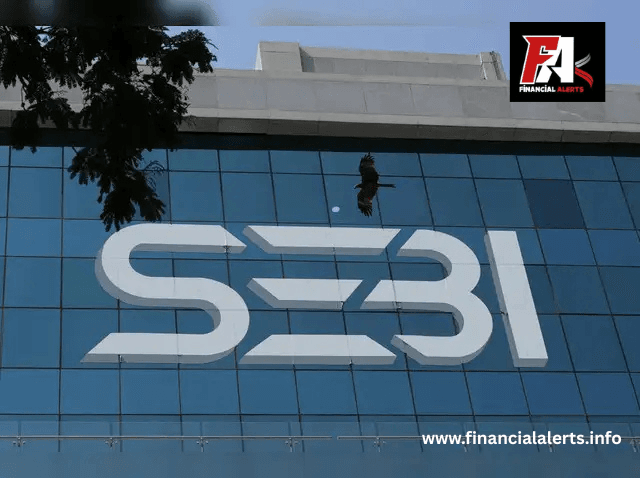Broking stocks are trading higher this week, riding a wave of optimism off the back of a new consultation paper by the Securities & Exchange Board of India (SEBI) aimed at streamlining broker regulations and reducing unnecessary red tape.
Why the jump in broking stocks?
- Simplified compliance
SEBI has proposed a sweeping review of the Sebi (Stock Brokers) Regulations, including the Depositories & Participants rules. The intent is to eliminate redundant compliance layers, reduce overlap, and allow brokers to operate more smoothly—something management teams at brokerages have long pressed for TradingViewReuters. - Combined inspections
Instead of separate audits by exchanges, depositories, and clearing corporations, SEBI is proposing a unified “joint inspection framework.” This means fewer disruptions, lower costs, and reduced operational burden for brokers that also act as depository participants The Economic TimesTradingView. - Targeted foreign investor access
Alongside broker-specific measures, SEBI is easing the path for foreign portfolio investors by proposing single-window access and reduced disclosure burdens for low-risk categories. That could deepen market liquidity and broaden participation—beneficial to brokers Reuters. - Heightened investor protection without overreach
SEBI’s annual report also touches on improved cybersecurity, stricter surveillance to combat manipulation, and efforts to curb abusive practices in derivatives markets—yet with a flexible, risk-based approach. Brokers appreciate the balance between oversight and operational freedom ReutersTradingView.
Market reaction in numbers
The consultation paper, released on August 12, 2025, immediately triggered gains:
- Brokerages traded up 3–6% across sessions
- Analysts described the move as “a game-changer in reducing friction and recurring costs for broking firms”
Going deeper: What the consultation paper outlines
- Stock Broker Regulations review: A working group will dismantle outdated provisions and update rules to reflect modern brokerage business models TradingView.
- One SIM–One Device initiative: To combat unauthorized trades, SEBI proposes binding client devices and SIMs to their demat accounts TradingView.
- Joint inspections: Exchanges, depositories, and clearing houses will pool resources to conduct unified audits with shared findings and one lead regulator per entity The Economic Times.
- Cyber-surveillance upgrades: Post the Jane Street fallout, SEBI flagged excessive option trades on expiry days and plans to erect advanced alert systems to catch anomalies ReutersTradingView.
What this means for brokers and investors
| Stakeholder | Impact |
| Broking firms | Lower compliance costs, fewer on-site inspections, streamlined procedures |
| Retail investors | Faster processing, tighter surveillance, safer trading platforms |
| Foreign investors | Easier access via streamlined onboarding and reduced disclosures |
| Overall markets | Boosted efficiency, improved liquidity, better system resilience |
Risks & roadmap ahead
- Consultation phase
The paper is open for feedback until late August. Its final version will shape the timelines and specifics of implementation. - Execution complexity
Integrating inspection systems across multiple agencies is a tech and administrative lift. SEBI will need strong coordination and follow-through. - Balancing oversight and freedom
Simplifying rules while preserving investor protections is a tightrope—it must be navigated carefully.
FAQ
1. What exactly is SEBI proposing?
SEBI plans to overhaul stock-broker regulations, consolidate inspections for brokers and depository participants, simplify compliance, enforce device/SIM binding for safety, and introduce better surveillance and cybersecurity TradingViewThe Economic Times.
2. How will this help broking firms practically?
They’ll benefit from fewer audits, lower compliance costs, and clearer rules—meaning smoother operations and potentially higher profits.
3. Are investor protections being diluted?
Not likely. SEBI proposes risk-based oversight, cybersecurity upgrades, and stricter surveillance—balancing flexibility with accountability ReutersTradingView.
4. When will these changes take effect?
It’s hard to say. After public comments close in August, SEBI will release a final draft. Implementation is expected over the next year or more, depending on complexity.
5. What does it mean for foreign investors?
They’ll see single-window access, fewer document hassles, and clearer pathways to access Indian markets—especially low-risk sovereign and institutional players Reuters.
6. Could there be downsides?
Yes. Coordination between agencies may lag. Brokers may underinvest in compliance. And missteps in balancing protections could expose market vulnerabilities.
Final word
SEBI’s consultation paper signals a meaningful shift from “command and control” to “smart and service-oriented” regulation. Brokers stand to gain from reduced friction and a clearer playing field, while investors may benefit from better protections and access. That’s why the market’s cheering—and broking stocks are taking notice.
Let me know if you want a breakdown by individual brokerage firms, deeper analysis of the inspection framework, or projections of profit impact.

I am a digital marketing executive as well as content writer in the stock market and crypto related blogs. My goal is to provide simple, interesting and reliable information to readers through my articles so that they always stay updated with the world of stock market and crypto.




w9fp8e
l0bj73
Dailyjilicasino is legit, fam. Been grinding there for a minute, and the payouts are pretty decent. Plus, their customer service is on point. You know? dailyjilicasino